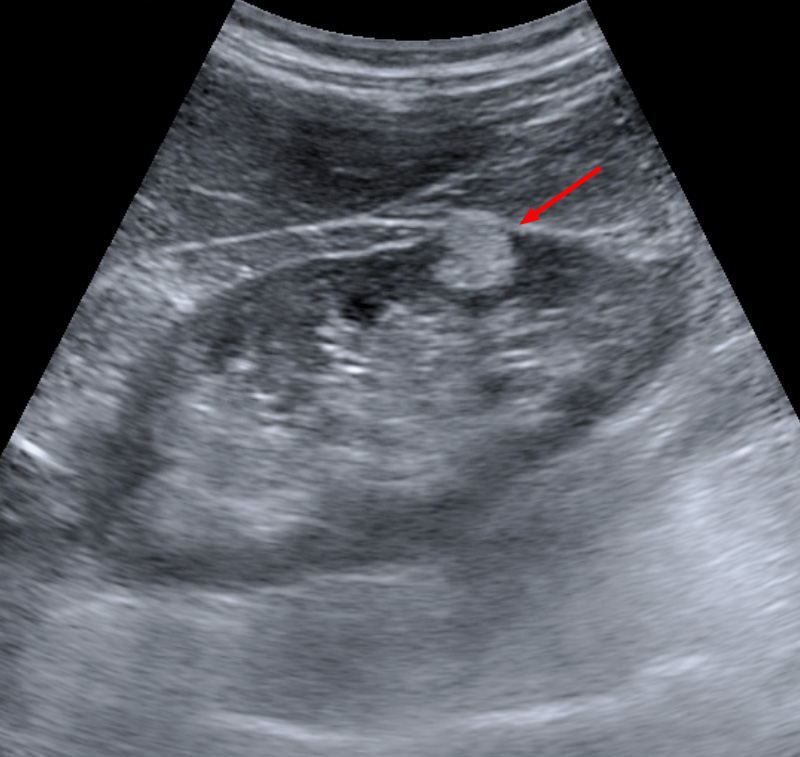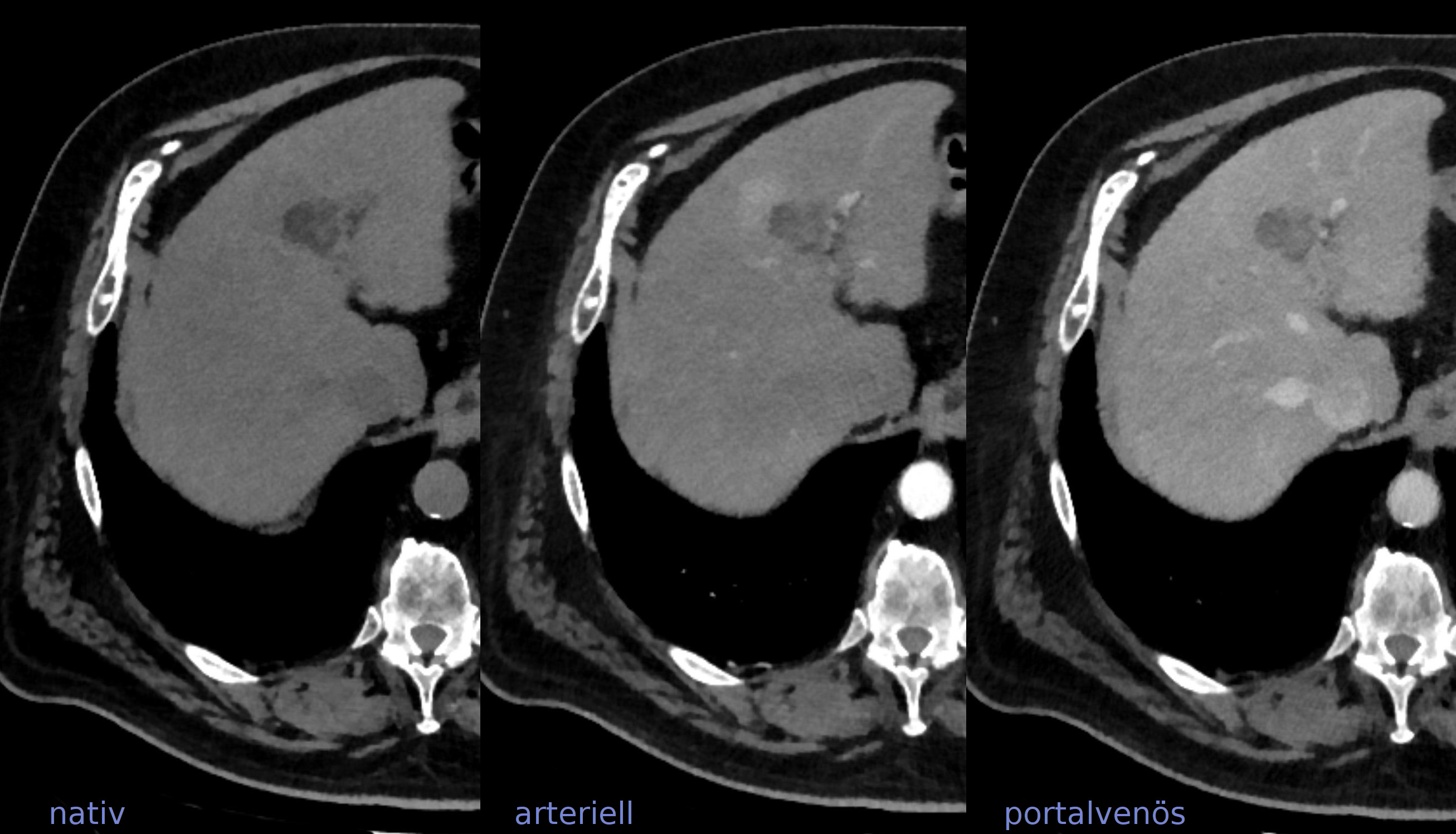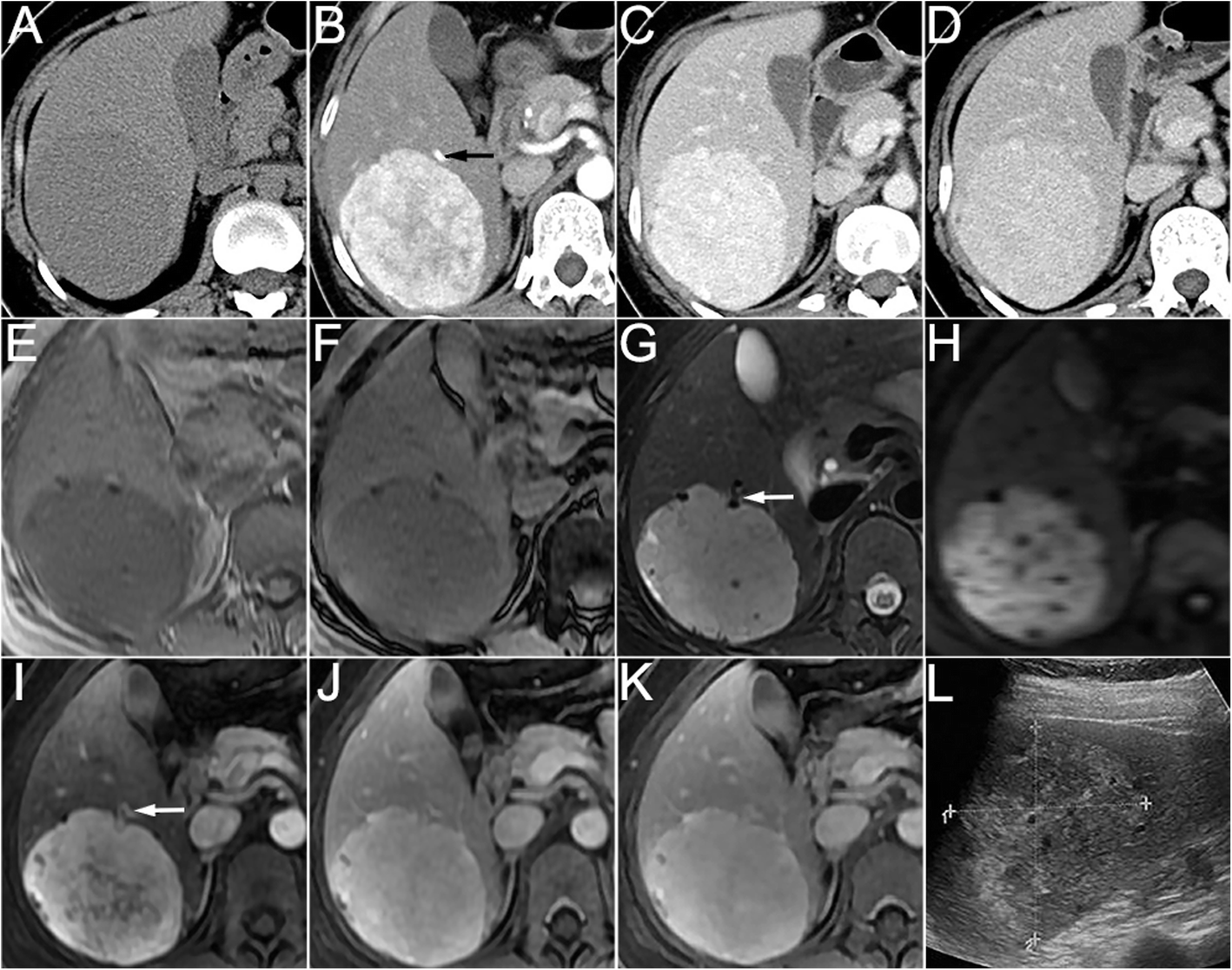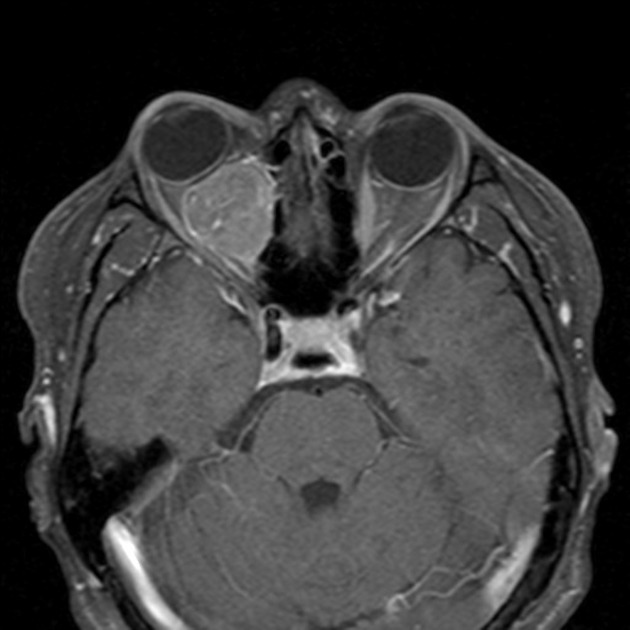hepatic angiomyolipoma
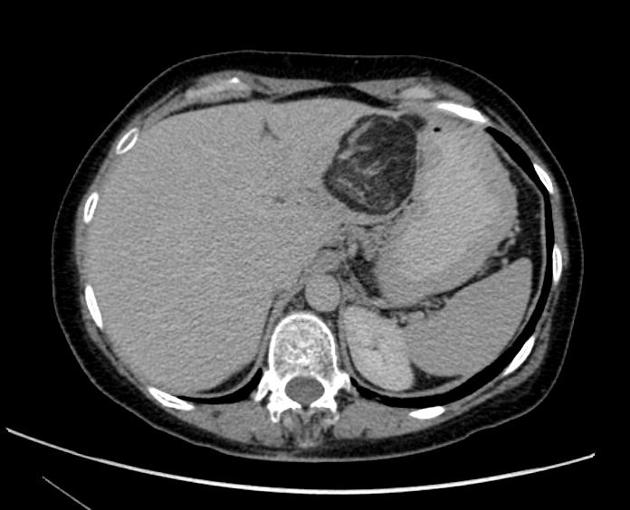
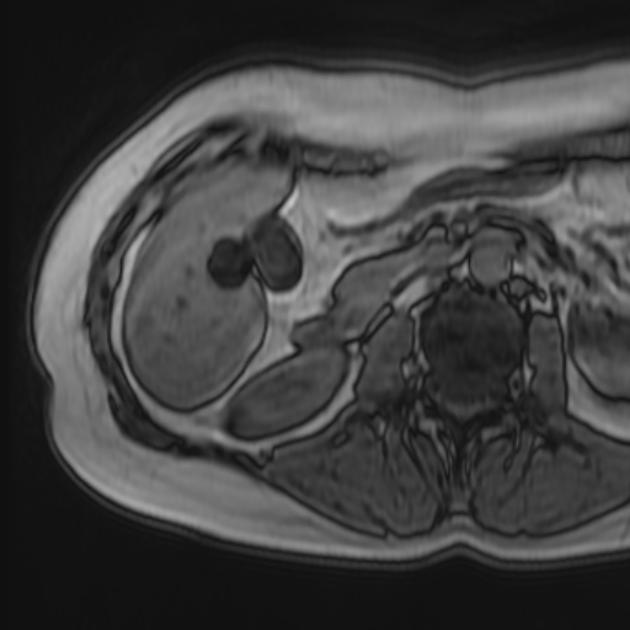






Hepatic angiomyolipoma (HAML) is an uncommon benign hamartomatous hepatic mass lesion, containing blood vessel (angioid), smooth muscle (myoid) and mature fat (lipoid) components. There is an association with tuberous sclerosis, although this is less strong than for renal AMLs.
Clinical presentation
Most reported cases of angiomyolipoma are detected incidentally.
However, initial presentation as acute abdominal pain related to intratumoral hemorrhage and intraperitoneal hemorrhage has been reported.
Pathology
Pathologically, an AML is an unencapsulated lesion with vascular, smooth muscle and mature fat components. Angiomyolipoma fat content can vary from less than 10% to more than 95%. Fat component is made up of mature yellow fat cells. At the microscopic examination, epithelioid smooth muscle cell and proliferating blood vessels are visible.
It may be classified histologically according to the amount of fat content into several subtypes:
- mixed
- lipomatous (>70% fat)
- myomatous (<10% fat)
- angiomatous
Immunohistochemical staining of the tumor cells reveals HMB-45 positivity. Among hepatic tumors, HMB-45 reactivity is found exclusively in the smooth muscle cells AML .
Associations
There is a reported correlation between hepatic angiomyolipoma and tuberous sclerosis (TS), although the association is not as strong at it is for renal AMLs. Up to 20% of renal AMLs are associated with TS, compared to only 6% of hepatic AMLs . Nonetheless, the liver is the second most frequent site of angiomyolipoma after kidney.
Radiographic features
Angiomyolipomas may be single or multiple, round or lobulated fat-containing mass lesions, seen more commonly in the right hepatic lobe.
The characteristic findings on any modality are the presence of both fat and prominent vascularity in the same lesion. If the fatty component predominates, it resembles lipomas but most of the time, a mixture of usual solid soft tissue intermingled with fatty components will be seen. Conversely, in cases of less fatty content and excess vascular part, the lesion seems like hypervascular hepatic mass lesions.
The drainage vein of AML is the hepatic vein, and identifying a perfusing vein communicating with the hepatic vein from the tumor center can aid in differentiating AML from fat-containing hepatocellular carcinoma (HCC) .
Ultrasound
It may be seen as hetero or homogenous echogenic (due to fat content) mass lesion. In the case of less fat content and excess vascular component, angiomyolipoma can be seen as a heterogeneous hypoechoic mass lesion. Could be indistinguishable from a hemangioma.
CT
On non-enhanced CT, angiomyolipoma presents as well defined solid heterogeneous mass containing markedly hypodense area. Due to the presence of the vascular component, marked enhancement in the arterial phase is evident. Drainage is via the hepatic veins, and this is the main differentiating point from fat-containing HCC that drains mainly in the portal vein.
- NECT
- well-defined mass with heterogeneous attenuation values due to the presence of fat and soft tissue densities
- maybe predominantly low-density mass
- arterial phase: significant enhancement in the arterial phase
- portal phase: becomes hypoattenuated
MRI
On MRI the lesion shows hyperintensity like as fatty tissue on both T1 and T2, which decreases with fat suppression. To detect the small volume of fat content in cases of lipid-poor AML, chemical shift imaging (i.e. in-phase/out-of-phase) is useful.
Signal characteristics
- T1
- fatty components show hyperintensity on T1WI
- loss of signal on fat suppressed sequences
- in cases of poor lipid-content in phase/out of phase will show loss of signal at out of phase
- T2: fatty components show hyperintensity on T2WI
- T1 C+ (Gd): enhancement of vascular component in arterial phase
Treatment and prognosis
Observation is the method of choice for asymptomatic cases. However, cases with severe abdominal pain or intraperitoneal bleeding not responding to conservative treatment can be treated successfully with embolization and/or surgical resection.
Differential diagnosis
General imaging differential considerations include:
- hepatocellular carcinoma (HCC) with a fatty component
- typically the fatty content is minimal and is in a scattered pattern
- AFP is elevated and HMB-45 in cell staining is negative
- focal fatty infiltration
- poorly defined borders without pressure effect on adjacent vessels
- hemangioma
- may be indistinguishable on ultrasound
- hepatic lipoma
- very uncommon
- should contain no soft tissue component and never shows enhancement after contrast administration
- metastasis from liposarcoma/teratoma
- extremely uncommon
Siehe auch:
- hypodense Leberläsionen
- hypervaskularisierte Leberläsionen
- Angiomyolipom
- fetthaltige Leberläsionen
- Leberlipom
- PEComas
- seltene Lebertumoren
- fetthaltiges hepatozelluläres Karzinom
- Lymphangioleiomyom der Leber
und weiter:

 Assoziationen und Differentialdiagnosen zu Angiomyolipom der Leber:
Assoziationen und Differentialdiagnosen zu Angiomyolipom der Leber:

